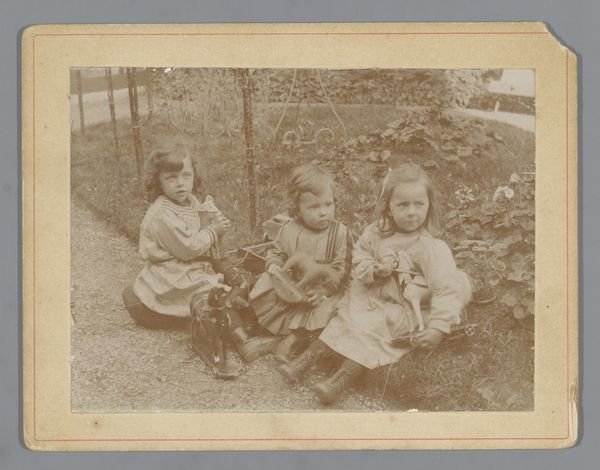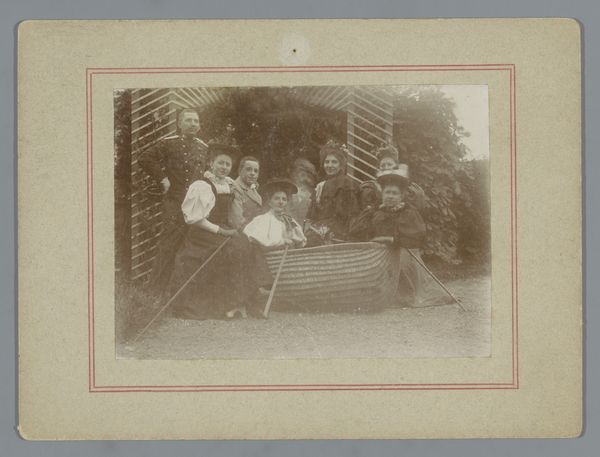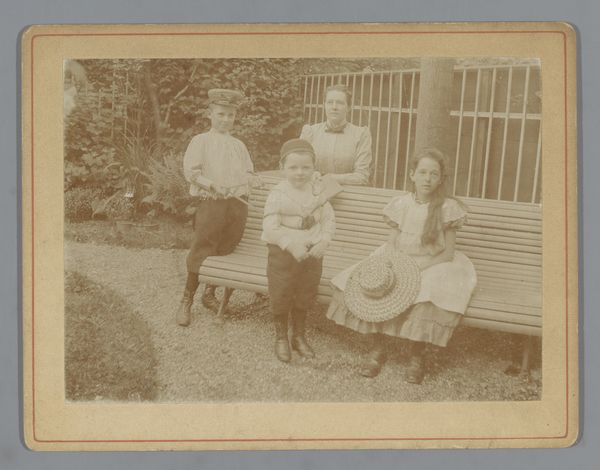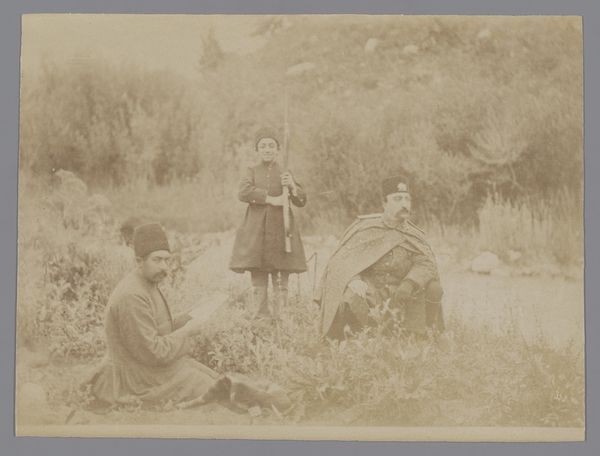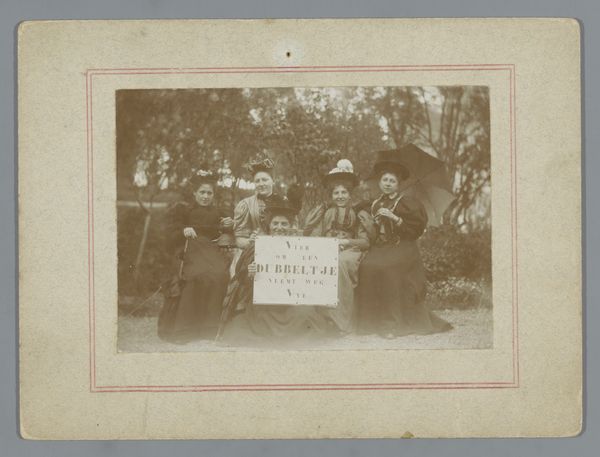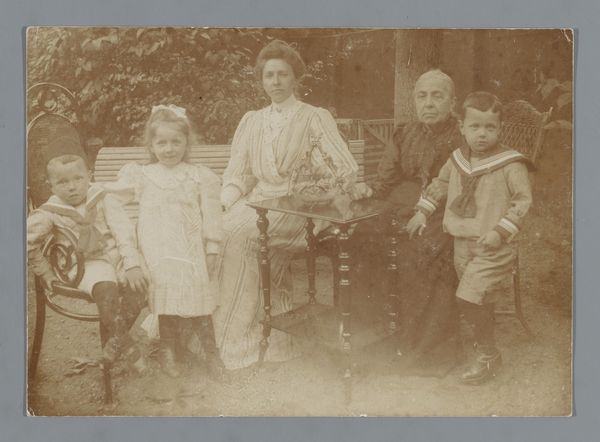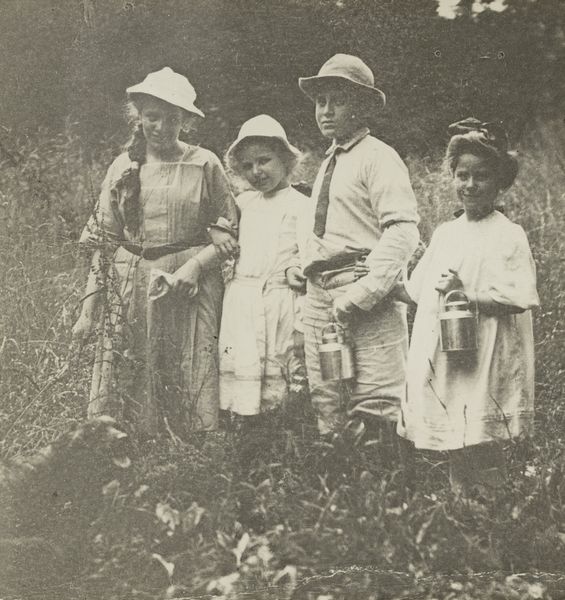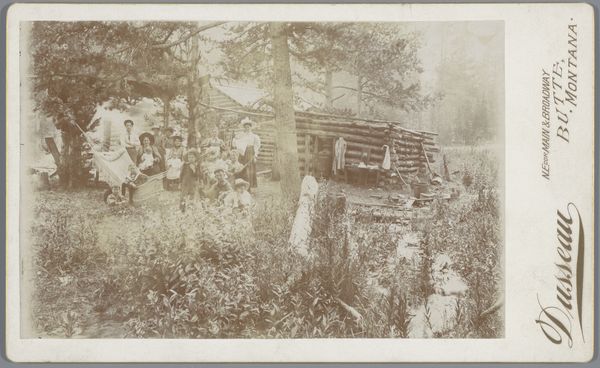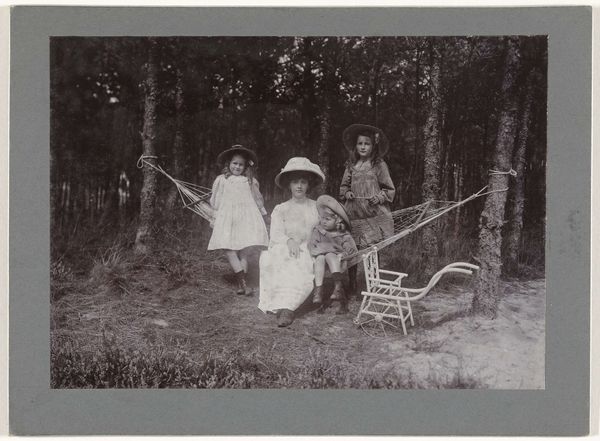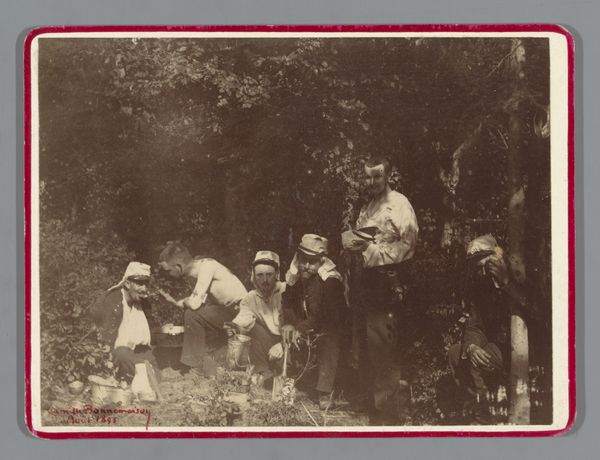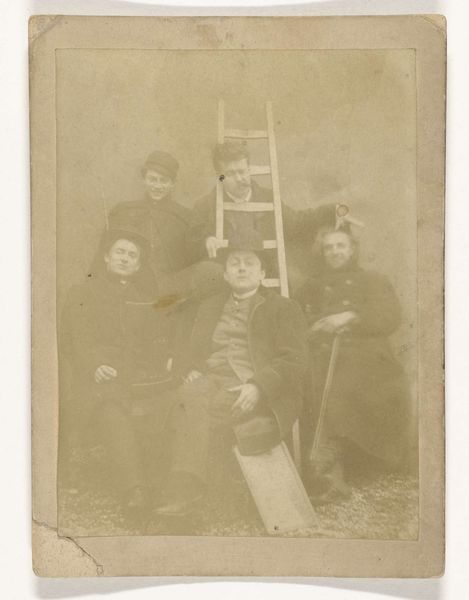
Portret van Ad, Johanna en Han van der Kop in een tuin c. 1905 - 1910
0:00
0:00
willemcarelvanderkop
Rijksmuseum
Dimensions: height 78 mm, width 108 mm
Copyright: Rijks Museum: Open Domain
Editor: Here we have "Portret van Ad, Johanna en Han van der Kop in een tuin", taken between 1905 and 1910 by Willem Carel van der Kop, using a gelatin-silver print technique. The photograph has a very posed and somewhat serious quality; the children don’t seem particularly happy to be photographed. How do you interpret this work, given the time it was made? Curator: Well, that seriousness is a great starting point. Photographs in that era often carried a certain weight, partly because of the technical process and cost involved, but also because of their perceived role in documenting and shaping social narratives. What does it mean to stage children within a constructed scene like this? To me, it speaks to the photographer's intentions to portray not just the children, but also the values and aspirations of the family. Editor: So, it’s more than just a simple portrait? Curator: Absolutely. Consider the context: early 20th century, a time of social and industrial change, evolving ideas about childhood and family roles. The staged garden, the children’s attire, and even their somber expressions reflect a specific social class and set of expectations. The photograph is not simply a record of the children's appearance, but it shows also how their parents wanted them and themselves to be seen. How might concepts like class or social performance affect the interpretation? Editor: That's fascinating. I hadn't considered the performative aspect so directly, but now I see it – it is a window into the social landscape of the time. Curator: Exactly! By understanding that social context, we can look at this portrait not just as a pretty picture, but also a reflection of power dynamics and social constructs. And that shifts the conversation significantly. Editor: I never would have thought of it that way, I’m grateful for this perspective. Curator: The beauty of art history is that it is always ready for renegotiation!
Comments
No comments
Be the first to comment and join the conversation on the ultimate creative platform.
